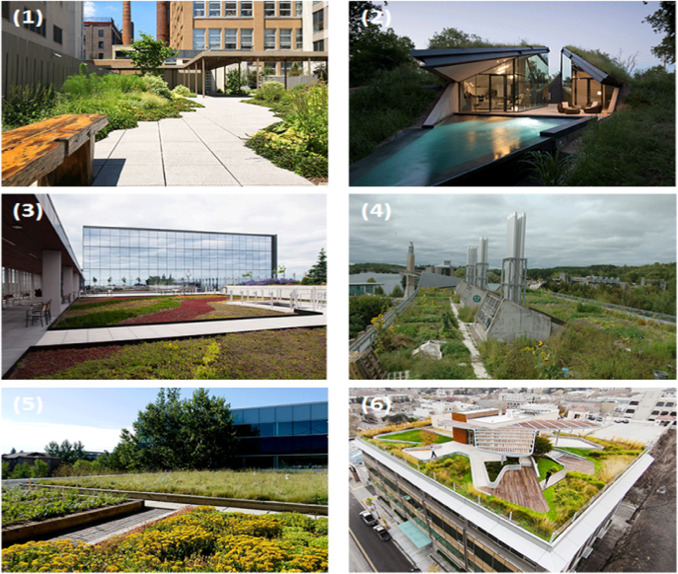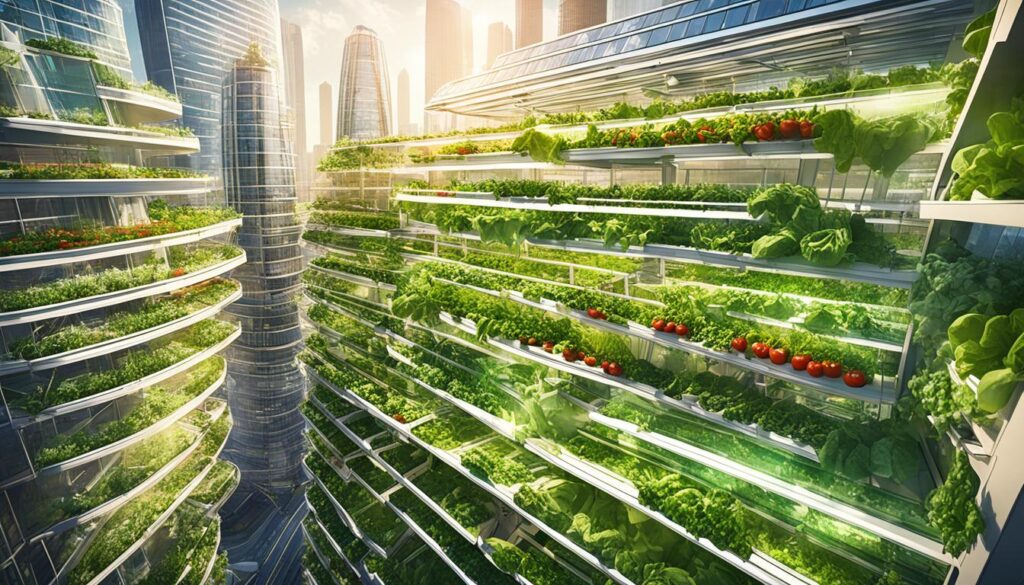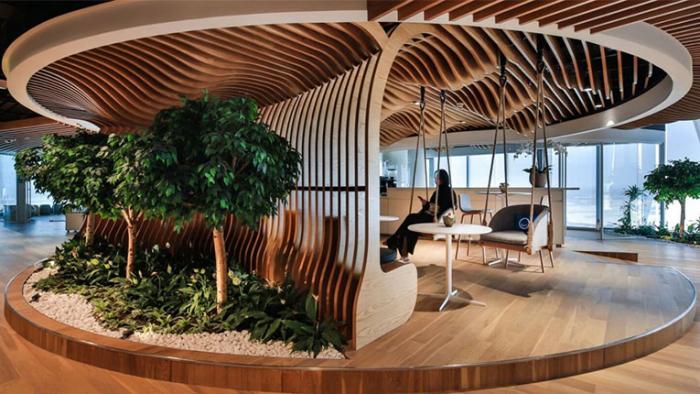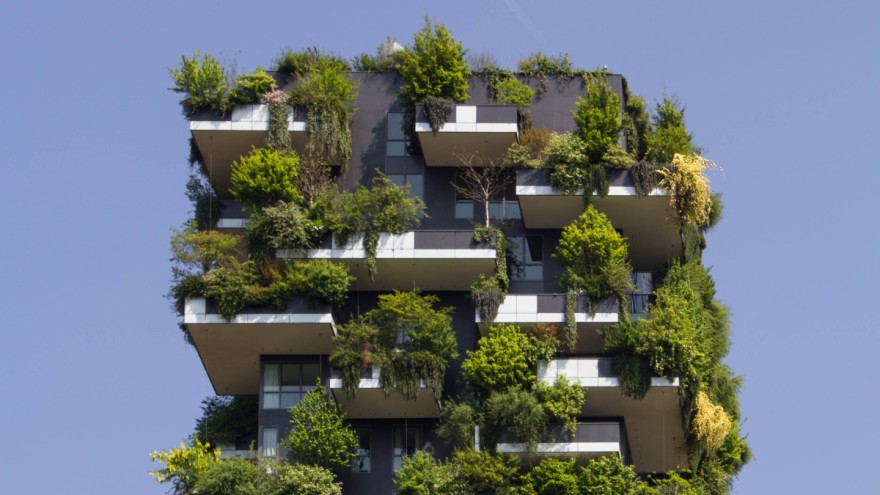Roof Gardens: Benefits, Challenges, and Implementation.
Roof gardens are transforming urban landscapes into lush havens, providing numerous benefits for both the environment and urban residents.
These green spaces significantly improve air quality, mitigate the urban heat island effect, enhance biodiversity, and facilitate the management of stormwater runoff, contributing to overall urban sustainability.
Establishing a roof garden presents certain challenges, including structural considerations, soil depth variations, and the need for ongoing maintenance.
This article examines the advantages and obstacles associated with roof gardens, as well as practical steps for successful implementation.
Explore how you can convert your rooftop into a thriving oasis.
What Are the Benefits of Roof Gardens?
.jpg_00.jpeg)
Roof gardens, commonly referred to as green roofs, provide a wide range of environmental, aesthetic, and social benefits, positioning them as a critical element of urban gardening, rooftop ecosystems, and sustainable architecture.
These essential green spaces play a significant role in mitigating the urban heat island effect, improving air quality, and promoting biodiversity in densely populated regions through effective rooftop farming and habitat creation.
Furthermore, roof gardens offer outstanding insulation properties, leading to reduced energy consumption and lower costs while effectively managing stormwater runoff, and enhancing energy efficiency.
They also serve as vibrant recreational spaces that enhance aesthetic appeal, contribute to urban resilience, and provide social interaction opportunities, reflecting a holistic approach to sustainable city planning and environmental stewardship.
1. Improves Air Quality
One of the primary advantages of roof gardens lies in their capacity to significantly enhance air quality, which is essential for improving urban wildlife habitats, promoting biodiversity promotion, and reducing the overall carbon footprint of cities.
These green spaces function as natural filters, effectively absorbing harmful pollutants including carbon dioxide, nitrogen oxides, and particulate matter, contributing to overall pollution reduction. A diverse range of vegetation, from grasses to shrubs and trees, contributes uniquely to this purification process, each playing a vital role in supporting biodiversity.
Research has demonstrated that the implementation of roof gardens can lead to a marked reduction in urban heat islands, thereby further improving air quality and promoting healthier communities.
For instance, a study conducted by the University of Melbourne indicates that well-designed green roofs can decrease rooftop temperatures by as much as 30% in comparison to traditional surfaces, thereby fostering a cooler local climate and enhancing overall environmental health.
2. Reduces Urban Heat Island Effect
Roof gardens play a vital role in mitigating the urban heat island effect, helping with the regulation of temperatures in densely populated areas through the introduction of green spaces and natural insulation.
These elevated green spaces not only absorb sunlight but also facilitate evaporation and cooling effects, thereby contributing significantly to temperature moderation. Research indicates that areas incorporating green roofs can experience temperature reductions of up to 30°F compared to conventional rooftops. The presence of vegetation helps trap heat, further influencing local microclimates, enhancing biodiversity, and facilitating temperature regulation.
On a broader scale, these gardens contribute to energy conservation by reducing the demand for air conditioning, with the potential to lower energy costs by up to 25% during peak summer months, showcasing their role in climate adaptation. Such findings underscore the importance of integrating roof gardens into urban planning as a viable strategy for climate change mitigation.
3. Increases Biodiversity
The introduction of diverse vegetation types in roof gardens can significantly enhance biodiversity in urban environments, creating habitats for various pollinators and contributing to ecological balance through strategic plant selection and habitat diversity.
These elevated green spaces serve as essential refuges, particularly in densely populated areas where natural habitats may be limited, promoting community gardens and urban agriculture. Careful selection of plant species not only attracts beneficial insects such as bees and butterflies but also provides shelter for birds and small mammals.
Numerous successful initiatives globally illustrate the potential of roof gardens to improve local ecosystems. For example, a notable project in Toronto has transformed rooftops into flourishing garden spaces, resulting in increased sightings of migratory birds and a marked improvement in the local bee population.
These positive outcomes underscore the impact that strategic planting choices can have in fostering vibrant, thriving communities that support diverse wildlife.
4. Reduces Stormwater Runoff
Roof gardens serve as an effective solution for managing stormwater runoff by employing advanced drainage systems that promote water conservation and alleviate the pressure on urban infrastructure.
These innovative green spaces not only enhance the aesthetic appeal of rooftops but also play a vital role in mitigating the effects of heavy rainfall and urban flooding. By integrating layers of vegetation and soil, roof gardens are capable of absorbing and filtering rainwater, thereby reducing the runoff that often overwhelms drainage systems.
The implementation of roof gardens presents engineering challenges, particularly in ensuring that the structures can adequately support the additional weight of soil and plants, considering soil types and structural support, while maintaining proper drainage.
Cities such as New York and Chicago have successfully integrated roof garden systems, utilizing specialized drainage layers that facilitate water flow without compromising the structural integrity of the buildings.
These case studies underscore the significance of strategic design and engineering in creating sustainable urban landscapes that effectively manage stormwater and optimize space utilization.
5. Provides Insulation
Along with their ecological advantages, roof gardens offer significant insulation benefits that enhance energy efficiency and assist in climate adaptation by reducing heating and cooling costs.
This insulation is accomplished through a carefully designed combination of layers, including waterproof membranes, drainage systems, and various soil materials selected for their insulating properties. These components not only adhere to local building codes, thereby ensuring safety and durability, but they also improve the overall performance of the structure.
Research indicates that buildings equipped with roof gardens can achieve energy savings of up to 30% in air conditioning requirements during the summer months, reflecting their contribution to energy efficiency and climate resilience. By implementing green roofs, property owners not only diminish their carbon footprint but also create environments that help mitigate urban heat island effects, enhance biodiversity conservation, and thereby enhance the overall livability of the area.
What Are the Challenges of Implementing Roof Gardens?
.jpg_01.jpeg)
The implementation of roof gardens presents a distinct set of challenges that encompass structural, financial, and regulatory dimensions, requiring meticulous planning and execution to ensure successful outcomes.
Among the primary challenges are the assessment of the existing roof structure to support the additional weight of soil and vegetation, as well as the navigation of local regulations and building codes that may influence design and installation processes.
Furthermore, ongoing maintenance challenges and cost considerations frequently present significant obstacles that must be addressed to establish a sustainable and thriving rooftop garden.
1. Structural Considerations
One of the primary challenges associated with the installation of a roof garden is verifying that the existing roof structure can adequately support the additional weight of the soil, growing medium, and plants, ensuring compliance with local regulations and safety issues. This often necessitates comprehensive structural assessments and potential engineering modifications.
Such evaluations are critical, as an inadequately supported roof could result in structural failures that not only jeopardize the integrity of the garden but also pose significant safety risks. Engineers must carefully consider various factors, including the load-bearing capacity of the materials used in the existing roof and the distribution of the added weight across the structure.
Additionally, weather conditions, such as rain or snow accumulation, can compound these challenges, making it essential to give thorough attention to drainage systems and material selections.
The choice of lightweight growing mediums and suitable structural reinforcements can significantly impact the overall design of the roof garden. By addressing these engineering considerations, homeowners can successfully create aesthetically pleasing green spaces that are both safe and sustainable.
2. Maintenance and Irrigation
Ongoing maintenance and the establishment of effective irrigation systems are essential for the long-term success of roof gardens, necessitating a commitment to regular care, adherence to proper horticultural practices, and effective pest management.
Regular monitoring of soil moisture, coupled with the timely adjustment of irrigation schedules, is imperative for fostering healthy plant growth. It is crucial to remain vigilant regarding temperature extremes and wind exposure, particularly in urban environments where conditions can be unpredictable.
Periodic inspections for pests and diseases are necessary to ensure that plants remain vibrant and thriving.
The use of native and drought-resistant species can significantly reduce water consumption while promoting biodiversity.
Implementing best practices such as mulching, composting organic materials, and employing sustainable fertilization methods not only supports plant health but also contributes to environmental sustainability, thereby making roof gardens a vital component of urban green infrastructure.
3. Accessibility and Safety Considerations
Ensuring accessibility and safety for users of roof gardens represents a significant challenge that necessitates strict adherence to building codes and thoughtful design principles, while also promoting community involvement and utilization. Roof garden design must consider factors such as structural support, rooftop farming, and the environmental impact to achieve the best outcomes.
Designing these elevated green spaces with wide, unobstructed pathways and robust railings can greatly enhance the user experience, making them welcoming to all community members, including those with mobility challenges. The integration of elements such as seating areas and interactive features encourages social gathering, fostering interactions and engagement among users. These spaces can also serve as rooftop terraces, providing urban agriculture opportunities and promoting sustainability.
Furthermore, incorporating native plants and sustainable practices not only enhances the aesthetic appeal of the environment but also serves to educate users about local ecology, emphasizing the importance of biodiversity and plant selection suitable for urban gardening.
By balancing aesthetic qualities with safety and accessibility considerations, roof gardens can transform into vibrant communal hubs that underscore the importance of green spaces in urban environments, contributing to urban heat island effect mitigation and biodiversity promotion.
4. Cost and Return on Investment
The cost associated with the implementation of a roof garden can be substantial, necessitating careful evaluation of funding sources as well as the potential return on investment derived from energy savings, environmental benefits, and space optimization.
Many individuals tend to underestimate the long-term value that such an investment can yield, particularly when considering factors such as improved insulation, decreased energy consumption, noise reduction, and the consequent reduction in utility expenses.
Various funding options, including government incentives, grants, and partnerships with local environmental organizations, can help alleviate the initial financial burden associated with these projects, making the financial aspect of green roofs more manageable.
In urban settings, instances have been observed where the integration of roof gardens not only enhanced the aesthetic appeal of buildings but also significantly mitigated stormwater runoff, reduced drainage costs, and improved urban resilience.
Ultimately, the adoption of sustainable practices through roof gardens not only contributes to environmental conservation but also presents compelling financial advantages over time.
How Can You Implement a Roof Garden?
Successfully implementing a roof garden necessitates a meticulously planned approach, commencing with consultation from professionals who can provide guidance on the complexities of rooftop design, environmental considerations, and adherence to public policy.
This collaboration is crucial for assessing the structural integrity of the building, ensuring compliance with local regulations, selecting suitable plant species that thrive in urban settings, and optimizing for climate resilience and heat retention.
Engaging experts can also facilitate the installation of irrigation systems and the development of a comprehensive maintenance plan to ensure the garden’s ongoing health and vitality, addressing potential maintenance challenges, and promoting sustainable practices.
1. Consult with a Professional
.jpg_10.jpeg)
Consulting with professionals is a crucial initial step in the implementation process of a roof garden, as they provide expert insights into rooftop design, structural assessments, compliance with local regulations, and the integration of green infrastructure.
Engaging with qualified architects and engineers not only ensures that the proposed garden adheres to local zoning laws but also identifies potential structural challenges associated with the additional weight of soil and plants, which is critical for ensuring safety and durability.
Their expertise is instrumental in guiding the selection of suitable materials and planting options that are well-suited to a rooftop environment. This proactive approach helps mitigate risks related to water drainage, weight distribution, long-term maintenance, and fire safety.
Such professional guidance significantly enhances the likelihood of a successful installation and contributes to the aesthetic and ecological benefits of the garden, ultimately fostering a sustainable space for relaxation and enjoyment.
2. Choose the Right Plants
Selecting appropriate plants for a roof garden is crucial for ensuring climate adaptation and maintaining overall garden health. This process requires careful consideration of soil composition, soil types, and the types of vegetation that thrive in rooftop environments.
When undertaking this endeavor, it is essential to consider the unique local climate, as it can significantly influence plant growth and survival. Sunlight exposure is particularly important, as some plants thrive in full sun, while others prefer partial shade.
Evaluating soil depth and quality is also vital, as these factors affect root development and nutrient availability. For those seeking a diverse and sustainable garden, native species or drought-tolerant varieties, such as sedums or ornamental grasses, often prove to be excellent choices for promoting biodiversity and ecosystem services.
These selections not only contribute to aesthetic appeal but also enhance the garden’s ecosystem services, including improving air quality, conserving water, supporting local wildlife, and promoting habitat creation and biodiversity conservation.
3. Prepare the Roof
Preparing a roof for a garden involves several critical steps, including waterproofing, assessing drainage systems, ensuring the structural integrity of the roof, and considering weather considerations to facilitate a successful installation.
Effective waterproofing is essential to prevent leaks that could damage the building beneath. This process typically involves the application of specialized membranes that create a barrier against moisture, thereby contributing to temperature regulation and structural stability.
Additionally, the installation of efficient drainage systems is vital to ensure that excess water can escape, thereby preventing waterlogging that could adversely affect plant roots and degrade the roofing materials over time, which is crucial for water conservation and plant health.
These preparatory measures not only contribute to the longevity of the rooftop garden but also enhance its overall performance by fostering a sustainable environment for plant growth. Ultimately, this transforms an often-overlooked space into a thriving green sanctuary.
4. Install Irrigation System
The installation of an irrigation system is essential for the effective maintenance of a roof garden, as it promotes efficient water conservation, facilitates optimal plant growth, and supports horticultural practices through the implementation of sound gardening techniques.
There are various types of irrigation systems that can be utilized in such environments, each providing distinct advantages tailored to different plant species and design configurations, ensuring climate adaptation and energy efficiency.
For instance, drip irrigation is particularly effective, as it delivers water directly to the roots of the plants, thereby minimizing evaporation and runoff. On the other hand, soaker hoses are designed to gradually release moisture into the soil, making them suitable for achieving broader coverage in densely planted areas.
Selecting the appropriate irrigation system not only contributes to water conservation but also simplifies maintenance, resulting in healthier plants, a more vibrant garden, and effective ecological footprint management.
Consequently, the selection process should consider factors such as the specific requirements of the plants, the overall design of the garden, and the local climate conditions, thereby ensuring the establishment of a flourishing green oasis within the urban landscape, enhancing biodiversity promotion and ecosystem services.
5. Regular Maintenance
Regular maintenance is crucial for the health and sustainability of a roof garden, involving a range of horticultural techniques, addressing maintenance requirements, and understanding the necessary frequency of care to ensure ongoing vitality.
Routine inspections are instrumental in supporting the delicate ecological balance inherent in this unique environment. Monitoring moisture levels is essential, as appropriate watering not only nourishes the plants but also mitigates issues such as root rot and pest infestations.
Weeding should be performed consistently to eliminate competition for nutrients, thereby allowing desired plants to thrive effectively and supporting biodiversity.
Seasonal plant care, including pruning and fertilizing, is vital for promoting growth and flowering, ensuring that the garden remains vibrant, productive, and visually appealing throughout the year.
By adhering to these fundamental tasks, individuals can cultivate a lush, resilient roof garden that flourishes in harmony with nature.
Frequently Asked Questions
What is a roof garden and what are its benefits?
.jpg_11.jpeg)
A roof garden is a garden that is located on the roof of a building. Its benefits include reducing urban heat island effect, improving air quality, providing insulation, creating a natural habitat for birds and insects, and promoting urban agriculture and community benefits.
What are the challenges of implementing a roof garden?
Some challenges of implementing a roof garden include the initial cost and maintenance expenses, structural limitations of the building, obtaining necessary permits and approvals, and addressing plant health and pest management.
How can a roof garden be beneficial for the environment?
A roof garden can be beneficial for the environment by reducing stormwater runoff, improving water quality, reducing energy consumption, carbon emissions, and facilitating carbon footprint reduction and pollution reduction.
What are the different types of roof gardens?
There are two main types of roof gardens: intensive and extensive. Intensive roof gardens are more like traditional gardens, with deeper soil and a variety of plants. Extensive roof gardens are lighter and cover a larger area, often using sedum and other low-maintenance plants, contributing to space optimization and green architecture.
What factors should be considered when implementing a roof garden?
Some factors to consider when implementing a roof garden include the structural capacity of the building, water accessibility and drainage, the type of plants suitable for the climate and roof conditions, maintenance requirements, and site assessment for safety issues.
Are there any financial incentives for implementing a roof garden?
Yes, some cities offer financial incentives, such as tax credits or grants, for the implementation of roof gardens as they provide numerous sustainability and environmental benefits. These benefits of roof gardens include stormwater management, insulation, and the reduction of the urban heat island effect. Additionally, urban gardening and green roofs can enhance air quality improvement and energy efficiency while offering aesthetic appeal and space optimization. Furthermore, rooftop ecosystems contribute to biodiversity and can create microclimate conditions. Some insurance companies also offer discounts for buildings with green roofs due to their fire-retardant properties and energy conservation capabilities. Challenges of roof gardens, such as structural support, maintenance requirements, and local regulations, must also be considered. Overall, the environmental impact and benefits of roof gardens make them a valuable component of urban landscape and green infrastructure.

I’m Bruno, an architect with a deep passion for Biophilic Design in Urban Architecture. Throughout my career, I’ve focused on integrating natural elements into urban planning, and I created this site to share my insights and foster a deeper understanding of how biophilic principles can significantly enhance urban living. Dedicated to sustainable development, I continually explore innovative design solutions that promote both environmental and human well-being in city landscapes.














Publicar comentário